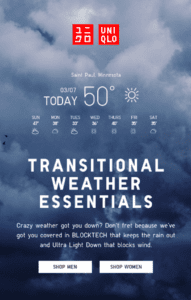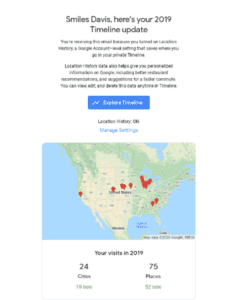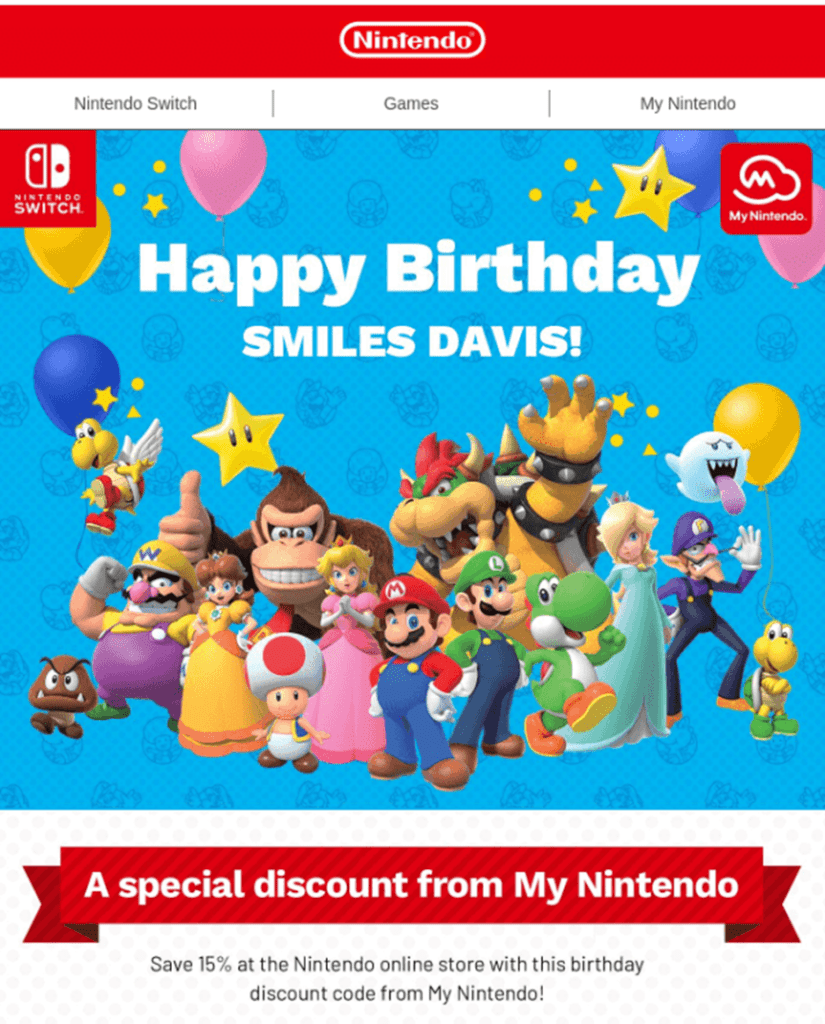
Personalisation – is it all it is cracked up to be?
If you’ve been in the world of marketing for any length of time (or even if you’ve just dipped a toe in, honestly) you will have heard the word ‘personalisation’.
It’s everywhere, and we don’t blame you if you’re sick of hearing about it. But here’s the thing: it gets talked about because it works.
- 90% of U.S. consumers find marketing personalisation “Very” or “Somewhat” appealing (Statista)
- Segmented and targeted emails generate 50% of all email revenue (DMA)
- 77% of consumers have chosen or recommended a brand that prioritises personalisation over a brand that does not (ZoomInfo)
- 90% of marketers report measurable improvements in performance when using personalisation tactics (Evergage & Researchscape)
- 84% of consumers say that being treated like a person rather than like a number is vital in winning their custom (Salesforce)
What’s more, 72% of consumers state that they will only engage with personalised messaging (SmarterHQ), and half of Millennials & Gen Z consumers will ignore unpersonalised communications (Salesforce).
This means that personalisation isn’t just a good thing to do – it’s a necessary thing to do.
But how can you use personalisation to boost your clients’ email results?
Let’s take a look.
Brilliant ways to personalise email marketing
One of the great strengths of email marketing is its flexibility. You can customise pretty much every element of your email.
Automation is a godsend here. It’s impossible to personalise every single email you send by hand but – assuming that you feed your automations the right data in the right way – email marketing automations can effortlessly personalise millions of emails every second, and they can get really granular with it.
How? Let’s start with the subject line and move through from there:
Personalised subject lines
Your subject line has a lot of heavy lifting to do. It’s the first part of the email that your recipient sees and, if it’s not engaging enough, it might end up being the only part they see.
Personalisation is a great way to grab someone’s attention right out of the gate – like this example, which attracts the customer’s eye by using their first name before luring them in with the exciting sale announcement:
![]()
You don’t have to rely on first names for subject line personalisation. Here, Audible has personalised by offering a recommendation based on the recipient’s purchase history:
![]()
You can also use their location (perhaps alerting them to offers or events in their area), or even relevant demographic features like their dialect or slang terms to make your subject lines more personal and engaging.

Personalised preheader text
The preheader text is a great opportunity to build a bridge between your subject line and the content of your email. To make that bridge look as enticing as possible, try some personalisation tricks.
For example, if you want your offer to take precedence in the subject line, you could add the personal touch in the preheader text – something like this:
![]()
As with subject lines, there are all kinds of ways to do this – don’t be afraid to experiment!
Personalised email content
There are many, many ways to personalise the actual content of your email, so I’m going to break this one down into a few sub-categories:
Personalised tone
Personalising your tone is about more than adding relevant names and info to your email. It’s also about the way you use your words.
For example, it’s important to make the terms of address match your personalisation tactics. If you want to address the recipient directly, like you would a friend, always use first-person language.
So, “Hi Joe, we’ve got some great offers for you!” rather than “There are great offers for Joe here” Do you see how the one is immediately more personal and direct than the other, even though they both contain a first name and the same information?
Relevant copy
Through customer research and list segmentation, you can group your list into categories with similarities, such as people in the same area or who have the same interests. You can then target these segments with content relevant to their location/interests/demographic etc.
Here, for example, is an email that’s personalised by the weather conditions in the recipient’s area:

You could also send out emails with personalised recommendations based on their purchase history, or targeted news based on their interests. The important thing is that it’s relevant to your recipient. Relevant content has value.
Personalised imagery
Let’s say you’re a pet food company. Your customer base is a mix of cat people and dog people. You want to add a picture of a cute pet to your latest newsletter – but should that picture be a dog or a cat?
Simple. Both. Make two templates, one with a cat and one with a dog. Then, send the cat version to the people who buy cat food, and the dog version to the people who buy dog food. Everybody wins!
Personal memories
Email marketing is a great way to build relationships with customers. Personalisation has a big role to play in this.
You can take both personalisation and relationship marketing to the next level with anniversary or memory-marking emails. These could mark special occasions in your journey together as brand and consumer, like this ‘1 year anniversary’ email:

A popular personalised tactic is to email customers a run down of their activity or interactions with you over the past year (most brands do this at New Year, but anniversaries and birthdays work too), like this example from Google Maps:

And, of course, it’s always nice to remember someone’s birthday!

What to avoid with personalisation?
Personalisation is great until it crosses the line into creepiness. Think of it like sitting next to someone on public transport. It’s nice to have a bit of pleasant chitchat and, as you grow to trust them, you may even develop a friendship.
But, if they sit down and immediately start bombarding you with personal questions and a lot of intrusive chatter, you’ll be desperate to move seats as fast as you can.
It’s the same with personalisation. Keep it respectful, don’t be intrusive, and don’t come on too strong. Make sure that all your personalisation efforts are, ultimately, about adding value for the customer.
Is personalisation all it’s cracked up to be?
That would be a resounding ‘Yes!’
Personalisation isn’t just a good tactic. It’s an essential tactic.
Luckily, email is fantastic for personalisation. It’s flexible, it’s direct, and there are some fantastic automations out there that can personalise in truly incredible ways.
So, what are you waiting for? Get out there and have personal(ised) conversations with your customers.
This might also interest you?
-
No-reply emails are (not) the answer
No-reply emails are (not) the answer
-
DOI reminders: essential or excessive?
When it comes to email marketing, the double opt-in (DOI) process remains a core pillar for establishing trust with your subscribers.
-
Emails Accessible: Ensuring Readability for Everyone
By leveraging the right email flows, franchises can create a unified brand experience while catering to local market needs. Discover more.

Let’s talk!
Whether you’re looking for a new platform, a partnership or just want to have a cup of coffee and a chat: we’d love to hear from you.
